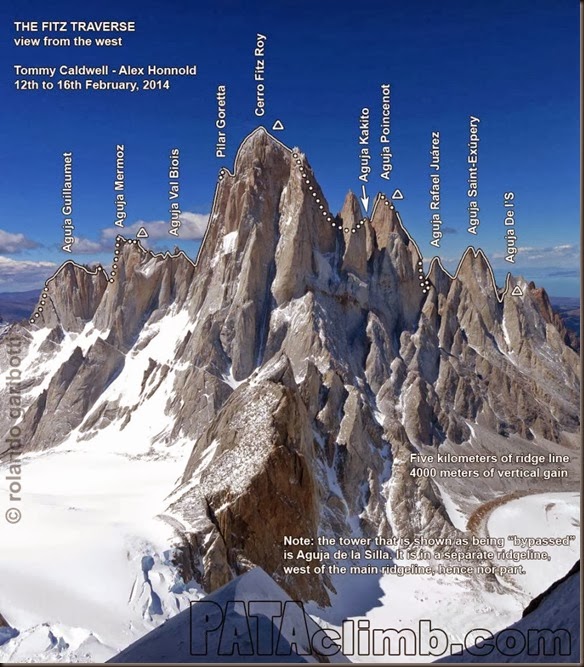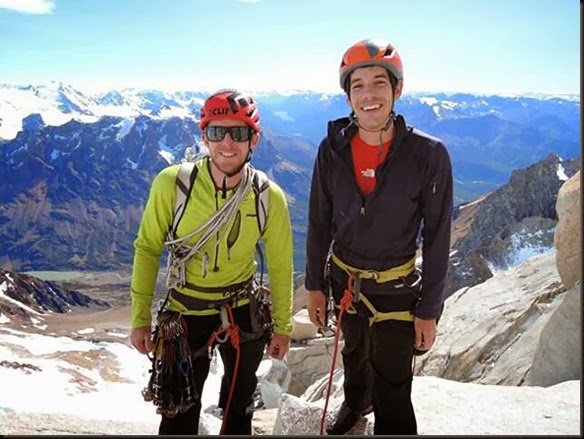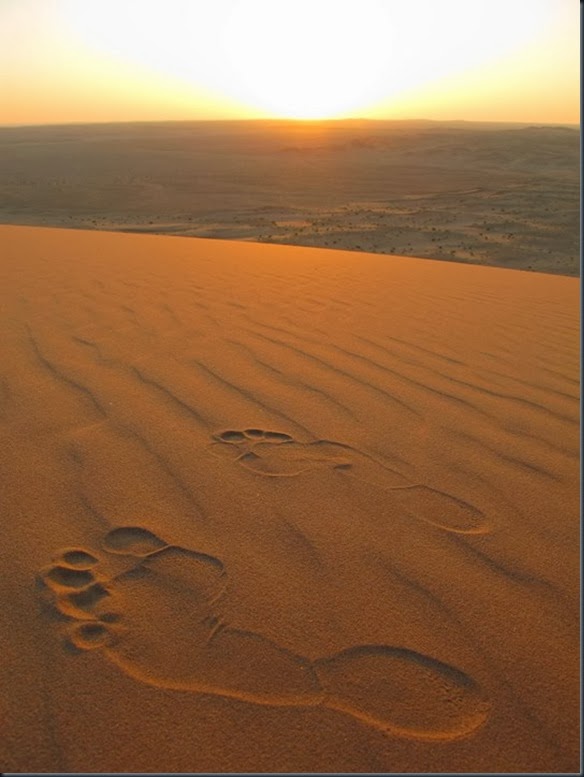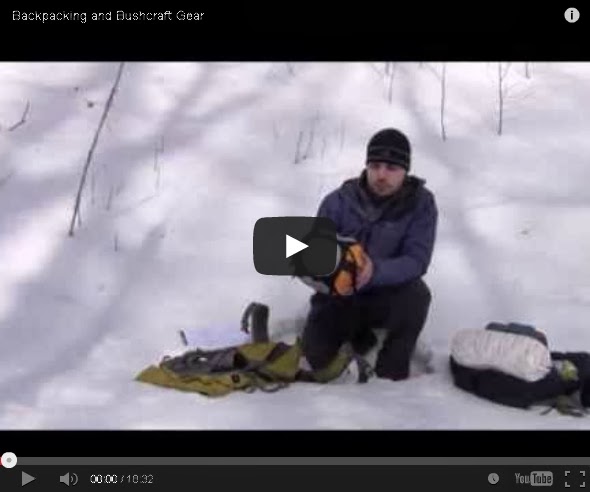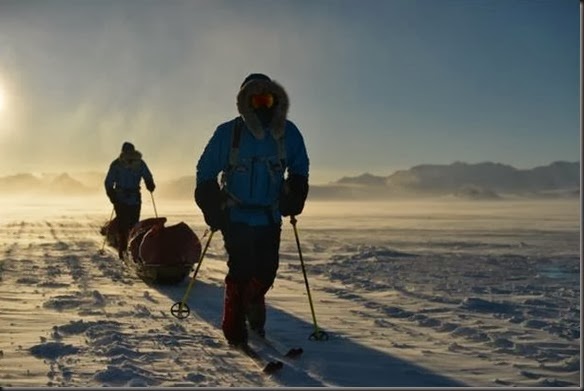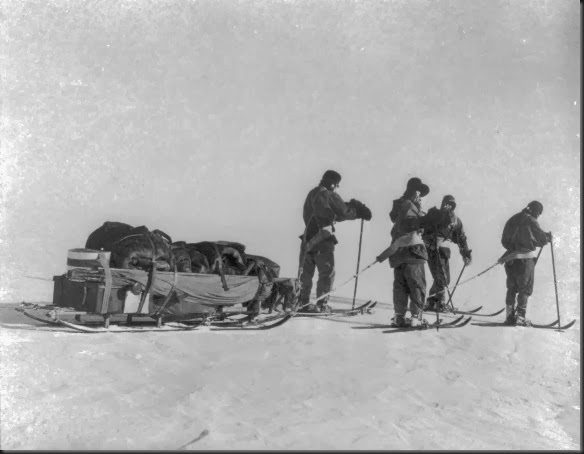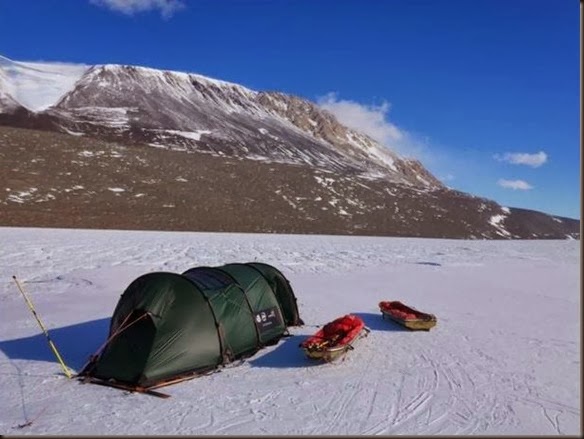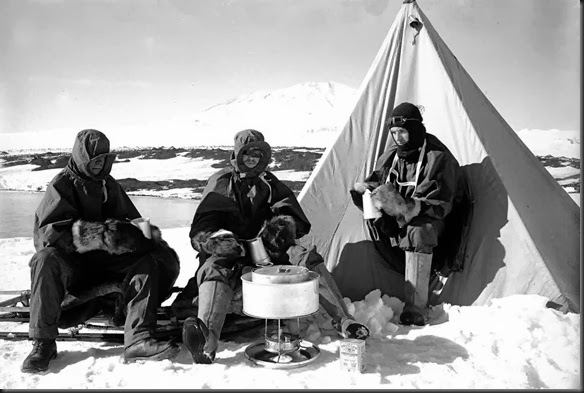For a second year now I have tried to do a winter summit of Mt. Washington in New Hampshire. If you guys have been following the blog, you know that I failed in my first attempt last year. You can read about that report here. Mt. Washington having some of the worst weather on earth, with some of the highest wind speeds ever recorded, last year I got stopped above the tree line by hurricane force winds. Unfortunately, I had missed my window on that trip. This year I was determined to make an attempt on the summit whenever the window presented itself.
My plan for this year different from last year in several ways. Similarly to last year, I was carrying my overnight gear, and planned to camp below tree line near Harvard Cabin, until the weather was good enough to proceed above tree line. The difference this time was that I decided that if the weather was good enough on the first day I would push all the way up to the summit and then overnight on the descent. That being said, if the weather was not good, I would overnight on the first day, and push to the summit on the second o third day.
Another difference in this year’s plan was to reduce the weight of my gear. Last year I brought too much insulation. It kept me comfortable, but I knew I could get away with less. So, this year I decided to go with my 0F (-18C) gear, i.e. my Western Mountaineering Antelope MF sleeping bag, and my Patagonia DAS parka. That also allowed me to use my REI Flash 62 backpack. I also chose to leave behind my snow shoes. They would certainly be helpful, but not essential due to the lower amount of snowfall this year. Since the rest of my gear stays constant, these were the only major changes. That brought the base weight of my pack, not counting clothing to 15 lb 14.8 oz.
I set out from NY at 11:00 pm an drove through the night. At 6:30 am, I arrived at Pinkham Notch, my starting point for the limb. The sun was about to come up, and the temperature was a crisp –8F (-22C).

I started my climb. For some reason I was not feeling well. I don’t know if it was the lack of sleep or the fact that I had drank too much coffee, but I was feeling very nauseous and sick. I hoped that it would go away.
The first half of the climb is fairly easy. It follows he Tuckerman Ravine Trail from Pinkham Notch towards the summit. During warmer weather, one would follow this same trail all the way up the mountain, but this route is closed in winter due to avalanche danger. Instead, at the half-way point, during winter an alternate route is opened up Lion’s Head Trail. Coincidentally, this is the area where Harvard Cabin is located (with a minor detour). You can camp out in the forest around the cabin, making it a convenient base camp in case the weather I not cooperating.
Since this first section of the climb was easy, I was able to pay more attention to my surroundings. There were quite a few of these berries around.
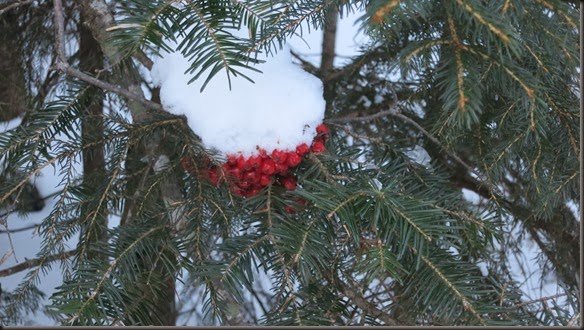
Even though it was fairly cold, I quickly started to warm up. It created for an interesting phenomenon I call “frozen hairdo”.
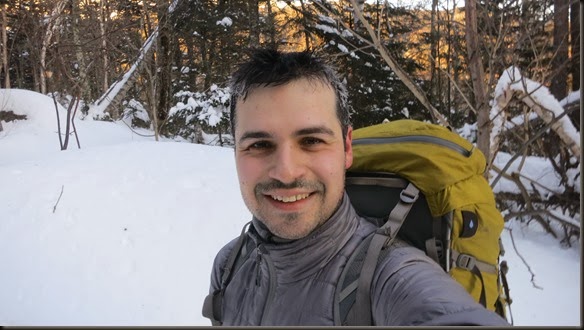
Around 9:15 am I made it to the beginning of the Lion’ Head Trail. I stopped o eat, drink some water, and put on my crampons.

From there on the going got tougher. Until the top of the tree line, the trail would be very steep, and requires quite a bit of energy to climb.
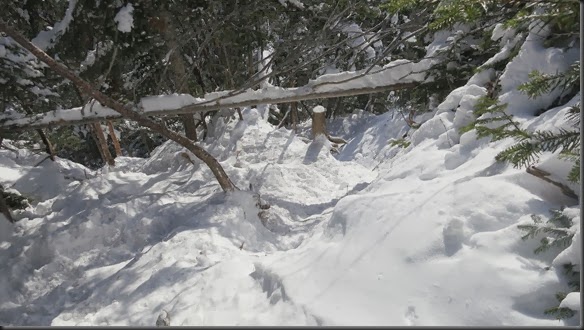
So far it appeared that I was the first person up this way. On this section however, I was passed by three different teams doing the same climb. I kept moving up slowly until I reached the top of the tree line. There I ate again, and put on my shell and goggles.
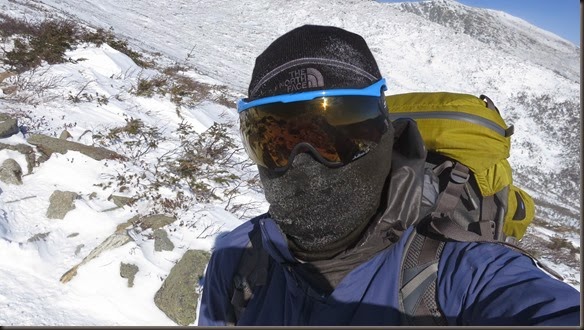
Ahead of me I could see the different teams who had passed me, and in the distance I could see the Lion’s Head rock outcrop.
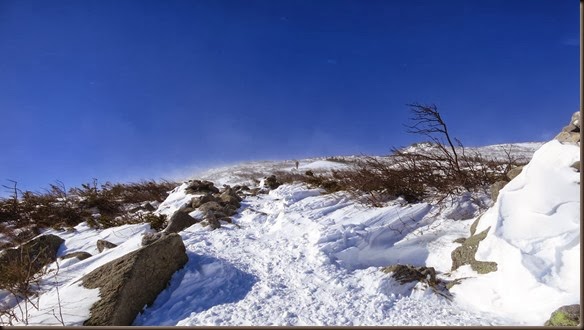
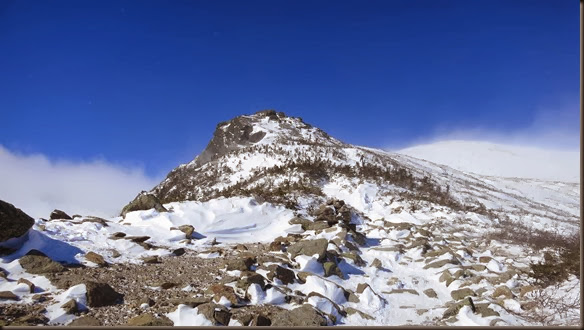
By 11:00 am, I reached the top of Lion’s Head, and could see the Tuckerman Ravine to the left and Mt. Washington to the right.
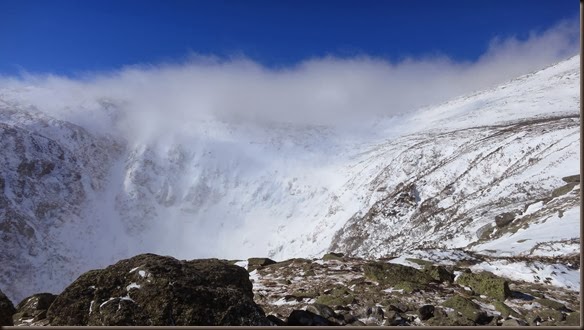
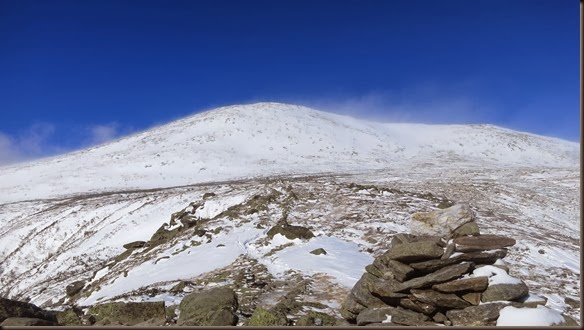
The visibility was good, and there wasn’t much snow accumulation, but the winds on top of Lion’s Head were brutal. It required significant effort to remain standing. When I reached this point I saw two of the other teams standing there. Both teams decided to turn back rather than continue. Ahead of me remained only one team. I decided to keep going. It was hard to take pictures because the camera would get blown away if I set it down, but I managed to wedge it between few rocks for this one.
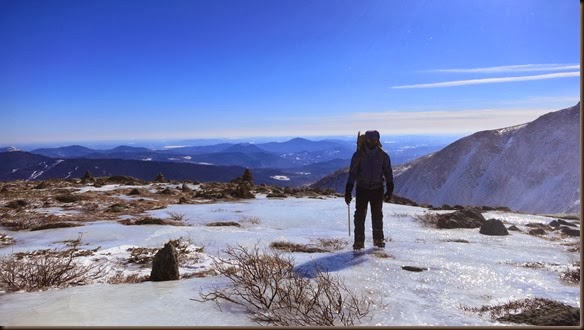
With the high wind-chill, the temperature was starting to get very low. I was wearing the Julbo Sniper goggles, which are good at preventing condensation in such conditions by allowing adequate ventilation, but the down side was that they were not offering any insulation for my eyes. As a result, I found that my eyes kept freezing shut. They would start at the outer corners, and progress across the whole eye. I would have to stop often to pry my eyelids open.
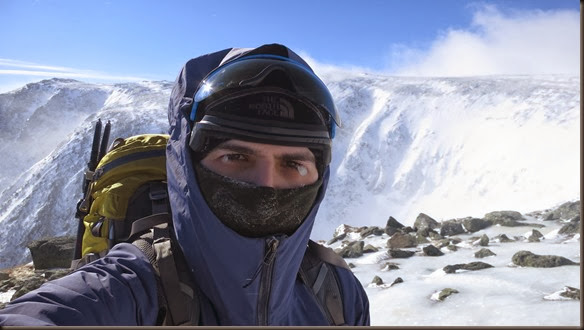
Initially the going was easy, despite the strong winds. I was able to keep myself standing, and that’s all I cared about. Soon however, I reached the Alpine Garden, an area of some low shrubs. They functioned as enough of a wind brake to allow for the accumulation of significant snow. I started post holing pretty seriously, and it took me some time to make it out of the Alpine Garden.
By the time I started my climb towards the summit, I was overtaken by another team, who were moving faster than me. By this point I really wasn’t feeling well. The nausea was getting really bad. I was forcing myself to eat and drink along the way, but it was not making things better. I was also developing a bag cough. I’ve been dealing with a lingering respiratory infection, and the cold air was doing a real number on it. So, I just paced myself and kept moving slowly.
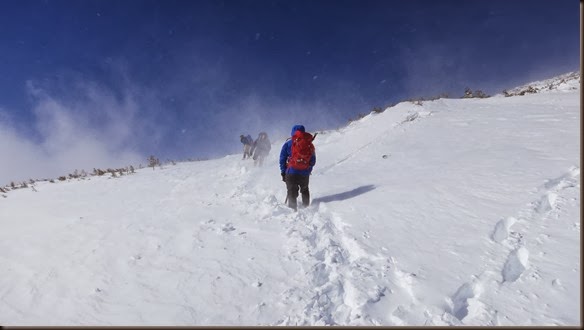
Little by little I kept pushing up until I got on the ridge towards the summit. Unfortunately, at this point I made a mistake. I pulled down my face mask so I could breathe more easily. I had it down for only a few minutes, but without my breath to keep it warm, it froze solid around my neck, and I was not able to pull it back up. For the remaining three hundred yards or so, I didn’t have any face cover.
The wind got even worse. By now the wind speed was around 80 mph, and with temperature of –13F (-25C), it gave a wind-chill of –56F (-49C). I was able to keep warm by moving, but just barely. Because I was not feeling well, I couldn’t move as fast as I would have liked, which didn’t let me produce as much body heat. Even so, By around 1:30 pm, I reached the summit and cold see the weather station. By now, several other groups had caught up with me.
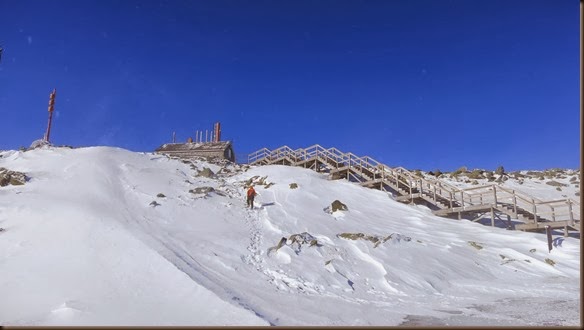
A short climb over the hill, and I was at the summit of Mt. Washington.
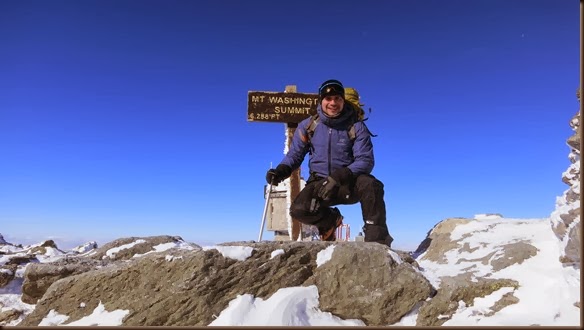
They say that one a nice day there is always a line for the summit of Mt. Washington, but there wasn’t any this day. Like I said, several groups overtook me and made it to the summit, but everyone there was trying to shelter themselves next to a building so that they do not get blown away.
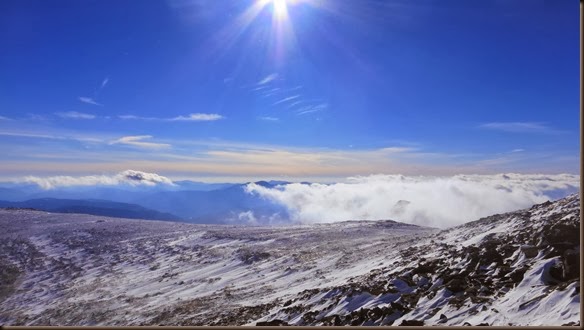


After taking the above picture, the guy who took it and his climbing partner noticed that I was starting to get frost bite on my nose. An area of it ad turned completely white due to the lack of face covering. I had to do something about it quickly. I got near one of the buildings, and pulled out my jacket-the Patagonia DAS Parka. I put it on, and pulled the hood forward, so that it shielded my face from the wind. I also ate some food and drank most of my remaining water. I had consumed almost two liters during the day, but it didn’t feel like it was enough.
Unfortunately, as a result of having to remove my outer gloves to do all this, my fingers froze to the point where I couldn’t feel or move them above the joint where they connect to the hand. I couldn’t properly hold my ice axe, so I switched to the trekking poles, which I cold sort of grasp. I would much rather have an ice axe in such conditions, but it is not much use if you can’t use it properly. I then started on the way down.
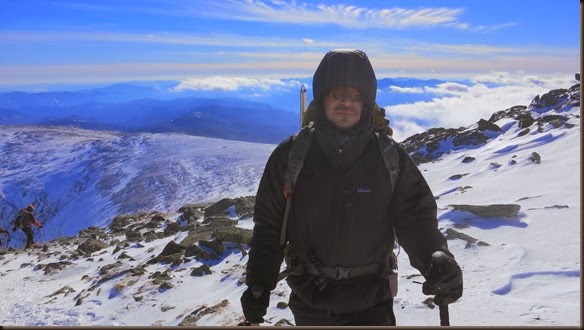
I descended very slowly. I was feeling awful, and I didn’t want to risk making any stupid mistakes. I also had to change my plan for the descend. Initially, I had planned to come down the Glen Boulder trail further to the west. It seemed like an easier descend, but would keep me above tree line longer. With the condition of my face, I didn’t want to risk the exposure, and opted to go back down the Lion’s Head trail, which was steeper, but as a result would get me below tree line faster. I just had to move very carefully and deliberately.
I reached the tree line around 3:30 pm. I ate again and finished what remained of my water. Half of it was ice by this point, but it was not fully frozen.
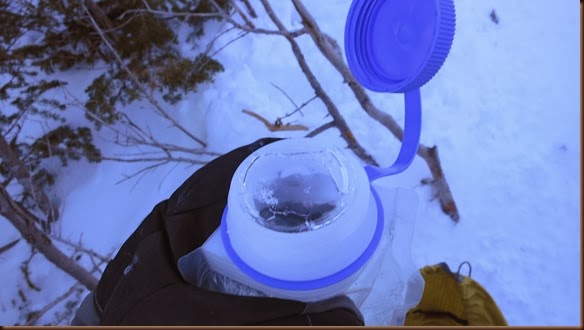
Eventually I made it to the Harvard Cabin area. It was nearly dark by the time I got there. I was dehydrated, and felt very sick.
I picked a spot, laid out my sleeping pad and sleeping bag. I didn’t want to bother setting up my tent. I thought my time would be much better spent rehydrating and eating.
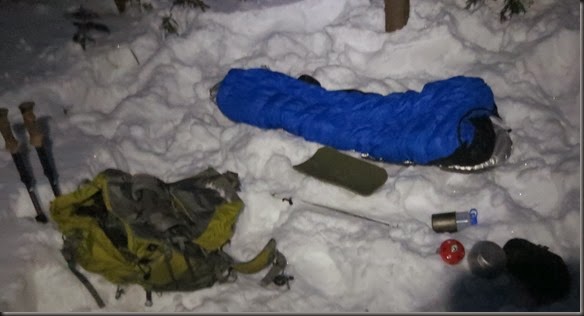
I got in the sleeping bag and started up the Kovea Spider and began melting snow. I forced down two litters of water and some food before going to sleep around 6:30 pm.
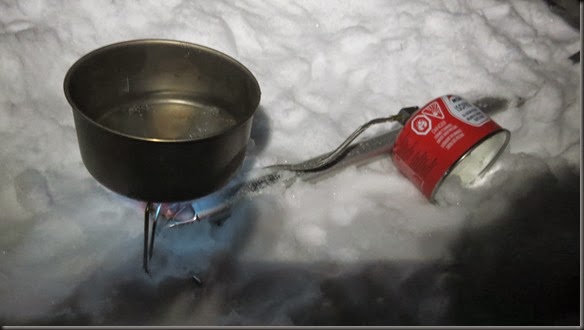
The area around this cabin is one of the few places where you are allowed to camp in the area, so there were some other people in the woods. All of them, including the caretaker of the cabin were very disturbed that I would sleep out in the woods without a tent. He expected the temperature to go down to –15F (-26C) and was convinced I would freeze. After a lot of reassuring, they let me be. I knew I might have an uncomfortable night, since my bag was only rated to 0F (-18C), but I am used to pushing the rating on my sleeping bag, so I wasn’t worried.
Apparently everyone in the area worries a lot because people do get in trouble often. I heard that during the night they had to rescue a team from the mountain because they weren’t able to get down fast enough. Luckily they had a SPOT locator with them, so SAR was able to land a helicopter hear them and get them out.
No such problems with me though. I put on my parka, put a hot water bottle in my sleeping bag, placed all electronics in the bag as well, and went to sleep. I was surprisingly warm all night. The pee bottle was of great use as I had to get up about four times due to all the water I drank. Not having to get out of the sleeping bag each time made the night much warmer. I woke up around 7:30 am because some of the other people were making noise.

I ate breakfast, packed up and headed down the Tuckerman Ravine Trail.
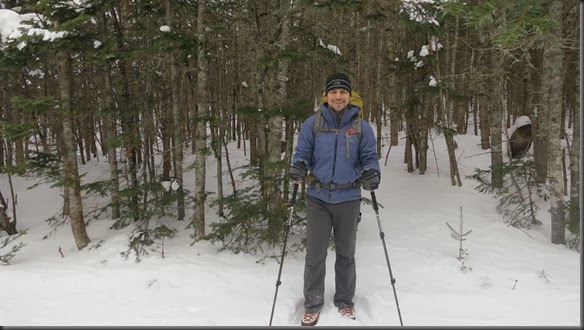
A few hours later I was out. Doing the trip in two days rather than three like last year, definitely made it harder. It forced me to do the ascent with no sleep and very little rest. However, I was determined to take the opportunity to summit whenever the weather allowed. With the possibility of snow on Sunday, I couldn’t risk it and end up like last year. In the end the strategy succeeded.
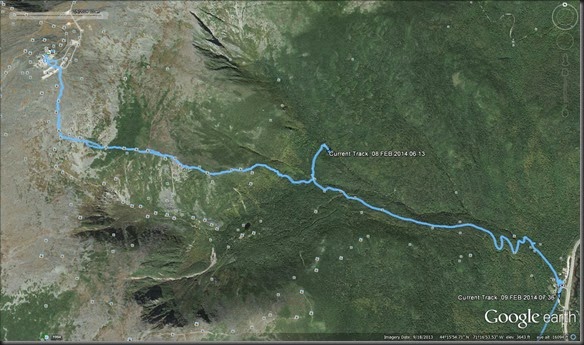
So there you have it. It took me two tries, but I managed to finally do a winter solo summit of Mt. Washington. It took a lot out of me. I’m sure I would have enjoyed it more if I was feeling better. I also regret not being able to descend using the Glen Boulder Trail, but I couldn’t risk it under the circumstances. Who knows, maybe next year.
